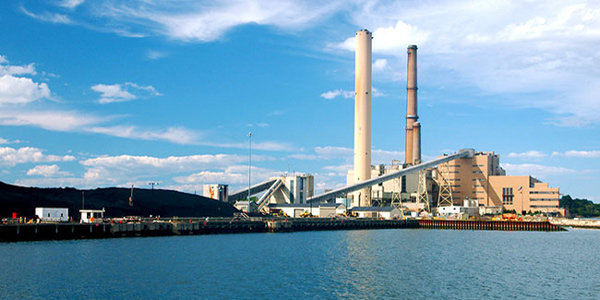By Michael Kuser
FERC on Monday ordered Footprint Power to refute a finding that the company violated ISO-NE Tariff rules and federal regulations by filing “false and misleading supply offers” for its Salem Harbor Power Plant in June and July 2013.
Footprint has 30 days from the June 18 order to show cause why it should not forfeit $2,049,571 in Capacity Supply Obligation (CSO) payments for a period during which FERC’s Office of Enforcement staff found that Unit 4 at the plant could not provide capacity. The company must also demonstrate why it should not be assessed $4.2 million in civil penalties.
Enforcement staff allege Footprint submitted supply offers that Unit 4 could not satisfy because Salem Harbor lacked usable fuel. Staff found the company not only failed to report the lack of fuel to the RTO but also “omitted material information from and/or misrepresented the fuel status of Salem Harbor and related operational status of Unit 4.”
Background
In 2012, Footprint bought Salem Harbor, a 748-MW coal- and oil-fired plant with four units, from Dominion Resources Services. Two units at the plant had been retired in 2011, while units 3 and 4 were operational at the time of purchase. Both units had a CSO for both ISO-NE’s Forward Capacity Auction 3 (FCA 3) Capacity commitment period (June 2012 through May 2013) and the FCA 4 commitment period (June 2013 through May 2014).
However, units 3 and 4 were scheduled to retire effective June 1, 2014, coincident with the start of the FCA 5 Capacity commitment period. Unit 3 was primarily a coal-fired unit and Unit 4 was a 437-MW oil-fired unit.
The units have since been demolished, and Footprint is now converting the plant to a 674-MW gas-fired, quick-start, combined-cycle generator, which is expected to go into service by the end of the year. (See “Future Locational Reserve Needs” in ISO-NE Planning Advisory Committee Briefs: June 13, 2018.)
The RTO had rejected earlier de-list bids to retire Unit 4 during FCA 3 and 4, citing reliability needs. In exchange for keeping the unit online and available, “Dominion was not paid the pro-rated capacity auction clearing floor prices in FCAs 3 and 4, but instead received the unit’s cost of service — which was approximately double the amount received by other ISO-NE capacity resources,” the commission noted.
Footprint subsequently collected CSO payments in the same amount awarded to Salem Harbor when Dominion owned the plant, which totaled about $4.4 million from June to July 2013.
Salem Harbor, at the time, had only one fuel storage tank that could hold roughly 200,000 barrels (bbl) of oil used to supply Unit 4. However, Footprint had also sold most of Salem Harbor’s fuel inventory back to Dominion, leaving only 40,000 bbl on site by December 2012, an amount the plant staff believed was less than two days’ worth of fuel.
Enforcement staff alleged that because Unit 4 burned between 14,000 and 16,000 bbl of fuel per day when operating, the plant’s managers were aware the remaining 40,000 bbl would not last longer than two days because only 29,000 bbl could be physically accessed from the tank.
‘Feasible’ Defense
ISO-NE’s internal Market Monitor alerted the commission to Salem Harbor Unit 4’s repeated inability to meet its CSO, also alleging “that false or misleading Day-Ahead (DA) supply offers and verbal communications were made to ISO-NE regarding Unit 4’s availability.”
In 2015, FERC staff and Footprint counsel discussed staff’s preliminary findings and Footprint’s claim that staff relied on assumptions rather than data to calculate Salem Harbor’s usable fuel inventory. Footprint claimed staff used the wrong data in its investigation, but “even after staff used the data source proffered by Footprint, use of that data source did not materially impact staff’s calculations,” said the commission.
In response, Footprint claimed Unit 4’s offers were “feasible” because the unit did not have to operate in accordance with its CSO due to certain environmental limitations on nitrogen oxide emissions.
In February 2018, after Footprint and staff had the opportunity to discuss the settlement, staff issued a letter providing notice of staff’s intent to recommend the commission initiate a public proceeding against Footprint.
Footprint submitted its response on March 12, 2018. “Although staff narrowed the set of violations pursued in light of the additional information it received … staff still concluded that the majority of Footprint’s arguments were not supported by the evidence and did not alter staff’s views that violations occurred,” said the commission order.
Footprint must now provide a concise statement regarding any disputed factual issues and any law upon which they rely, admit or deny each material allegation and set forth every defense relied upon. Failure to answer the order to show cause will be treated as a general denial and may be the basis for summary disposition, the commission said.
Footprint may also choose to apply section 31(d)(3) of the FPA to the proceeding. If the commission then finds a violation, it will issue a penalty assessment and, if not paid within 60 days of the order assessing penalties, it will institute an action in the appropriate United States district court.



